In this article, we are going to talk about something very important for sports lovers i.e. soccer, hockey, martial arts, or anything with fast-flying balls and bodies.
Basically, we are supposed to discuss protecting the shin guard, precautionary measures and most importantly ‘how to wear shin guards’ or ‘how to wear shin guards soccer’.
Table of Contents
Significance of Shin Guards
At times, wearing bulky shin guards seems silly when you just want to get out on the field and play ball. Some old-school dudes even think going bare-shin shows how tough they are. But let me tell you, anyone who tries playing hardcore sports without shin protection is just inviting himself to the bed of a hospital.
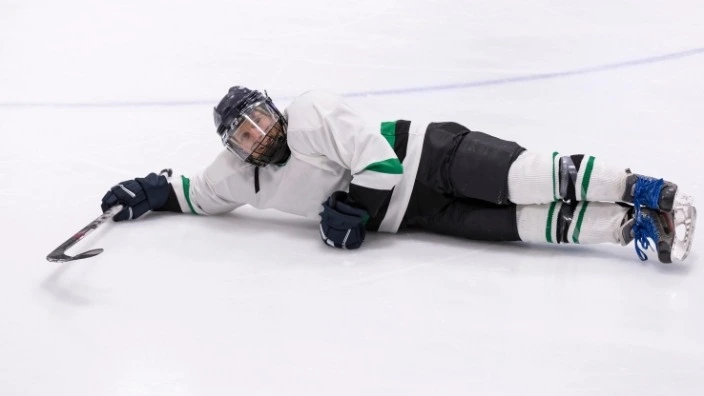
Although branded and comfortable shoes also extend some protection to the player during the play but the entire reliance cannot be placed especially in the games where the legs are vulnerable to hit and damage. Yeh hey dudes has introduced shoes with good length to keep you saved from some injuries.
In order to know more about the specification and uses of Hey Dudes you can read the article How to Wash Hey Dude. Remember! Your shins are vulnerable when you're running around and kicking.
To confirm the vulnerability, you can interview any player who had an episode of injury due to the non-wearing of shin guards. Following are the key reasons in answer to the queries ‘why wearing shin guards is necessary’?
- Massive Bruising
- Ripped Up Skin
- Shin Bone Fractures
- Durable Shin Splints
- Youth Growth Plate Damage
Making - Types of Material
Once you are convinced to fasten shin guards for protection, you are out of unforeseen trouble. Considering the uses and variety of the shin guards formed of different materials; it is advised to pick the right option suitable for your sports activity.
Let’s shed some light on the basics of each variant of shin guards: -
Foam - Light and Mobile
These are lightweight, comfy, flexible foam rubber. Think of it like a firm mattress pad for your shins. Foam moulds to your legs for a cosy feel and allows freedom of motion to perform well during the play.
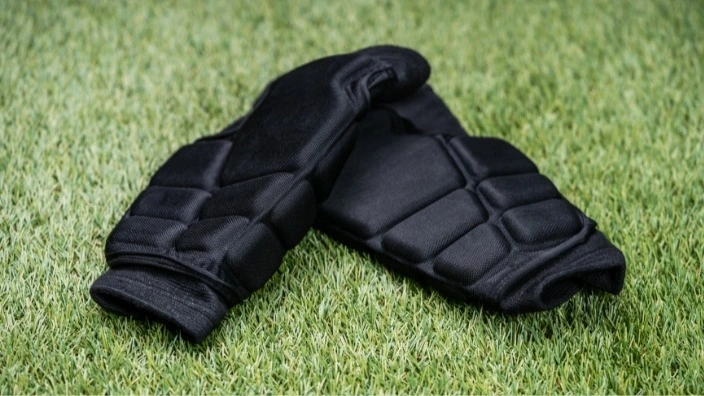
For casual kick rounds, practice drills, or flag football, this kind of shin guard lets you move frequently while giving some protection. However, foam is the beginner's choice before you take some licks and realize you need the hard plastic shell to acquire more protection.
Hard Plastic Shells - Unbreakable Protection
Some experienced guys at the play can use the rigid, tough plastic, which offers the ultimate shielding. We are talking about protection like bulletproof level protection.
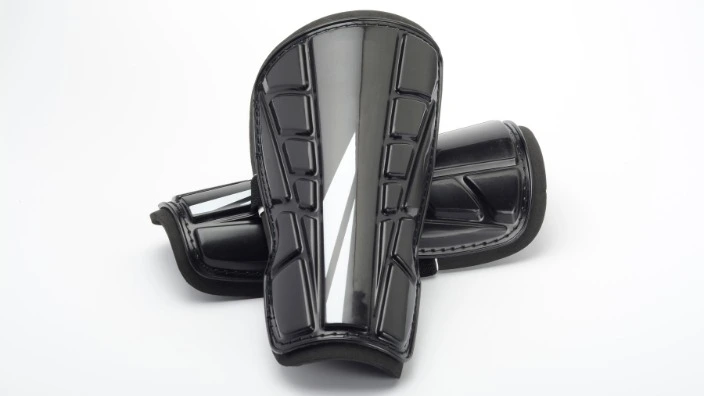
Of course, the more armour you stack on, the less mobility you get. Hard shells can feel bulky and restrictive during play. Likewise, plastic would also let less airflow in.
Remember! If you play elite contact sports at a high level, the plastic tank shields are worth the tradeoffs. Whereas average players are not supposed to burden themselves with such ultimate protection.
Composite - Lightweight Protection
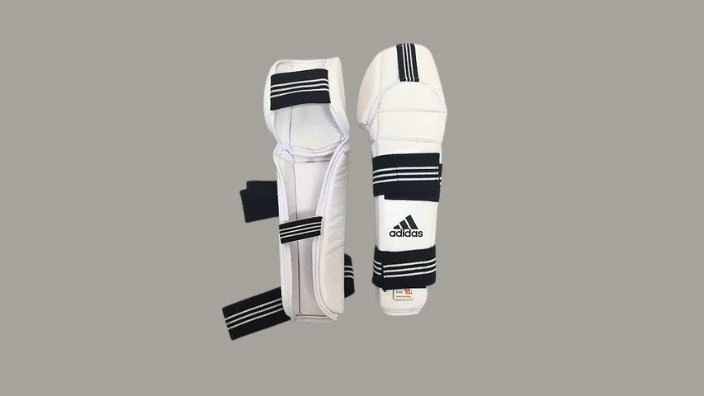
Composite shin guards give you secure shielding without becoming old-fashioned safety. The exterior of the shin guard is a moulded plastic shell while bonded to cushy foam or gel from the inside.
Having discussed the above materials/ types of shin guards; consider your stage or level of playing and choose the types of hits you take. Feel free to mix and match materials for different legs - foam up front, composites in back as the case may be.
Slip-in guards vs. full shin guards
Shin guards come in two main styles either with full-length coverage or the short one. The following details will elaborate on the distinction between the two: -
Full-Length Shin Guards
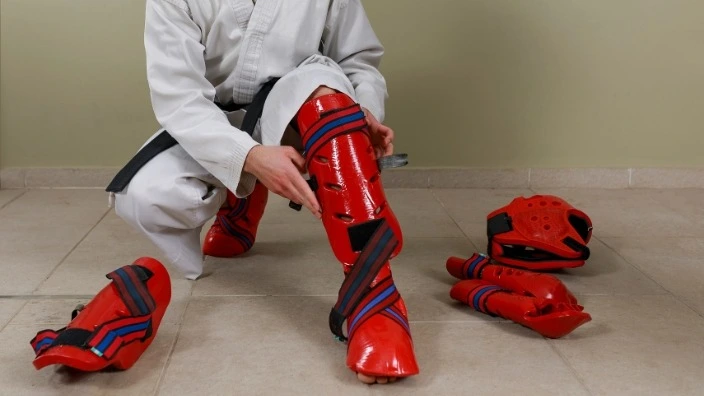
- Provide complete lower protection from ankle to knee.
- Choice of young athletes for ultimate protection.
- Downsides are restricted in mobility and air flow is stopped.
- Hard, bulky and weighted shin guards
Slip in Shin Guards
- Provide protection to the lower shin area
- Choice of athletes with a casual style of playing, not for professionals
- Slimmed downsize, with no restriction on mobility and better breathability.
- Lightweight Shin Guards
How to Select Best Shin Guards
Finding great shin guards is the first step while choosing the right type is second followed by performance and safety. Shin guards are not available in one size only rather the right pair becomes like a second skin, moving fluidly with your body.
Follow these rules to select and procure shin guards for yourself: -
- Ankle Bone Barrier
- No Slipping or Rotating
- Overlapping Knee Cap
- Circulation Check
- Sport-Specific Mobility Test
Wearing Shin Guards Soccer - Steps
After buying a pair of shin guards, your next move is to position it well to enable you to feel comfortable, and confident in playing and become performance-oriented. Given steps would ensure wearing the shin guards in the right positioning.

Step 1 - Knee Armor First
If you also wear knee sleeves or pads, put those first than shin guards so they sit above the shin guards. Your knee gear should overlay atop your shin armor.
Step 2 - Supportive Backing Faces In
Most quality shin guards have a rigid protective shell or extra padding on the interior side that faces your shin. Turn that supportive backing toward your skin so it can absorb impacts.
Step 3 - Align Down Shin Bones
Centre the guards over your shins as you strap them on. They should run perfectly vertically following the anatomy of your leg bones, not angled off left or right.
Step 4 - Anchor Above and Below
Firmly secure the top strap around your calf muscle and the bottom strap right above the ankle bones. This sandwich approach locks the guards in place and prevents rotation in the playing ground.
Step 5 - Test Sport Movements
Jog, cut, jump - do athletic maneuvers specific to your sport wearing the shin guards. Ensure they stay put and don't limit your pivotal game moves. Adjust straps as needed. With proper positioning, your shin guards become an extension of your body, protecting those fragile bones without impeding performance.
Durability of Shin Guards
Your hardworking shin guards take a beating every game protecting your legs. Treat them right, and they'll pay you back with many seasons of loyal service.
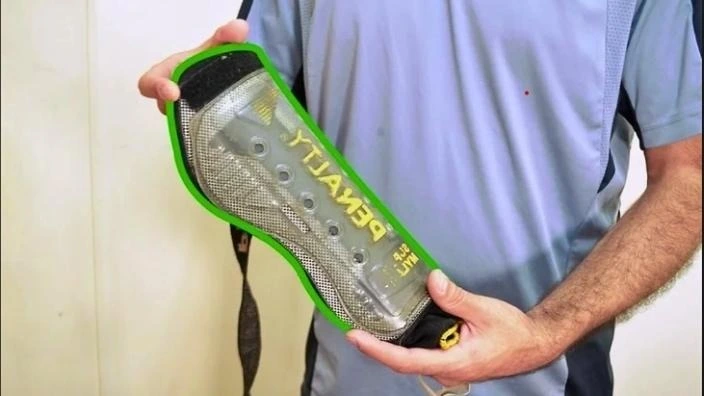
Follow the below detailed care plan to keep guards in tip-top shape and for the long life.
Post-Game Cleansing
After sweaty matches, use antibacterial soap and water to scrub grime and funk from your guards. Give those pads and straps a deep clean rinse. Let them air dry fully before bagging them up.
Monthly Disinfecting
Over time, micro-tears in the fabric let bacteria take up residence inside the pads. Not cool. Apply disinfectant spray monthly to kill those nasty germs and eliminate stank.
Quarterly Inspection
Check for cracked shells, ripped fabrics, frayed stitching, or busted straps at least every few months. If the structural integrity is compromised, guards need to be replaced as quickly as possible.
Off-Season Storage
Before packing guards away for the off-season, ensure they are totally dry to prevent mildew growth. Supply in a ventilated, shaded area - not a musty garage or damp basement.
Replacement Schedule
Well-made guards can serve faithfully for 1-2 seasons with proper care. But outdated pairs lack modern protective innovations. Budget allocation should require the replacement of guards after every two years.
Give your gear the treatment it deserves, and it will give you peace of mind shift after shift. We have sufficiently explored the ins and outs of shin guard types, fit, care, and more, you have all the knowledge needed to find your perfect pair.
Conclusion
In conclusion, it is crucial to prioritize properly fitted shin guards over budget concerns, as a poor fit can jeopardize the level of protection they provide. Allowing new shin guards a break-in period is important, as the padding will mold to your legs over the first few uses, ensuring a comfortable and secure fit.
To ensure the longevity and effectiveness of your shin guards, it is recommended to hand wash and air dry them after each use to prevent odor issues. Regularly disinfecting shin guards can also help inhibit bacteria growth within the padding.
For parents, monitoring children's shin guard fit often is crucial, as their legs grow between seasons. Following manufacturer guidelines for sizing, cleaning, storage, and replacement timelines is key to ensuring the continued protection of your shins.
Frequently Asked Questions
How do I find the right shin guard size?
Measure around your calf at the widest point to determine sizing. Try on multiple sizes starting with measurements - guards should fit snugly but not restrict circulation. Size up if too tight. Guards shouldn't rotate around the leg when moving.
Should shin guards be tight or loose?
Guards should fit snugly to stay in the proper position when playing. Straps should be tightened enough to prevent slipping but not cut off circulation. Some compression allows the padding to mould to the legs. However, extremely tight guards can irritate and restrict movement.
Can I cut shin guards if they are too long?
Avoid cutting guards, as this weakens their protective structure. Instead, first, try tightening calf and ankle straps more to limit the slippage of overly long guards. If still too long, exchange for properly fitting shorter guards.
Can youth shin guards be passed to siblings?
Hand-me-down guards often don't fit properly as kids grow. Buy new guards specific to each child's measurements for ideal protection and comfort. Prioritize proper fit over frugality with protective gear.


















